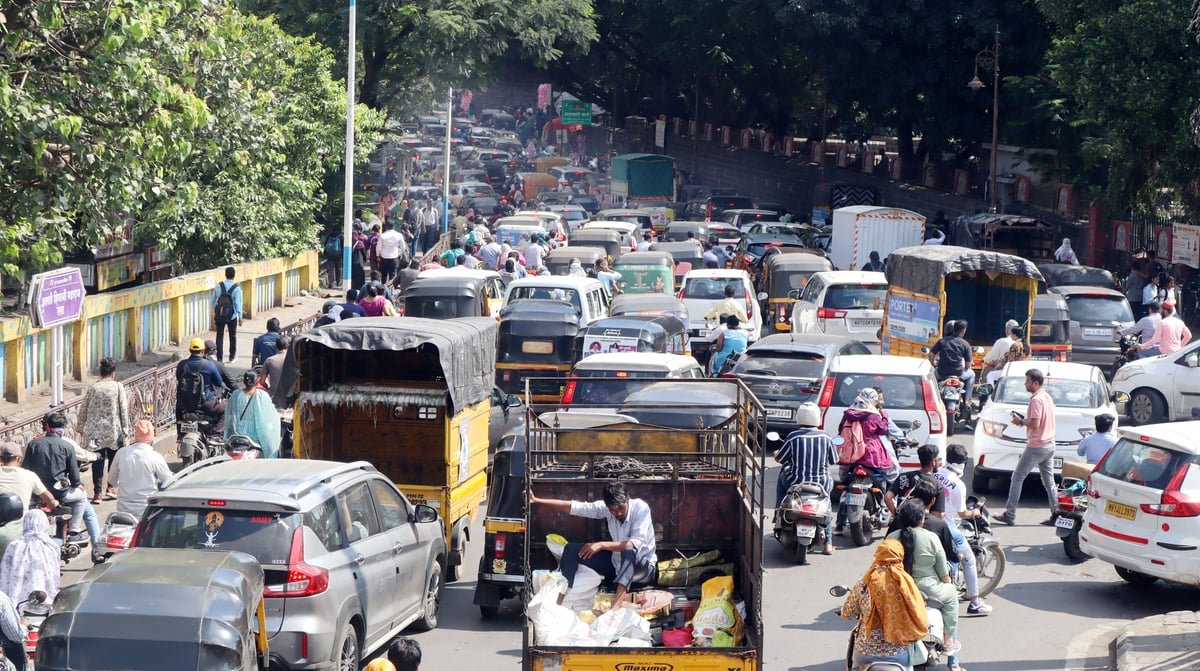The BJP-led Mahayuti’s historic landslide in the 2024 assembly elections in Maharashtra now raises hopes for good governance in the state.
The BJP leaders at the Centre and the State who are in the driver’s seat must bear in mind that the thumping mandate given to them by the people of Maharashtra is not a reflection of good governance, but in the hope of good governance.
It is essentially the Mahayuti’s electoral strategy of the Ladki Bahin scheme of direct cash transfers for poor women; a pro-Maratha reservations and a pro-OBCs approach, and consolidation of Hindu votes coupled with the charisma of Prime Minister Narendra Modi which resulted in this victory.
The Mahayuti leaders must now roll up their sleeves and begin delivering on good governance for the state which is facing a number of critical issues such as employment generation and economic resurgence.
In Pune, the BJP and its alliance partner NCP won 10 of the 11 seats in Pune and Pimpri-Chinchwad, rousing fresh hopes of better governance.
An issue that needs to be addressed urgently is that of worsening traffic congestion and in the coming years, this prominent IT-education-industrial hub could well emerge as the city with the worst traffic congestion in the country.
On 9th November, some prominent citizens of Pune focused attention on this problem and the possible solutions at a gathering organised by Top Management Consortium Foundation (TMCF) and the Pune Platform for Collaborative Response (PPCR).
In his presentation at this gathering, Additional Commissioner of Police Manoj Patil pointed out that as the 8th largest city in India, Pune now has a population of 10 million with 7.2 million registered vehicles. 62% of these are two wheelers and 24% four-wheelers, with 1,300 new vehicles being added to the roads every day.
While a city requires 10% to 15% area under roads as per the norms laid down by the UDCPR (Unified Development Control and Promotion Regulations for Maharashtra State), Pune has just 6% area under roads.
The city has just 2,200 km of roads and 60% of these are narrow, less than 20 ft wide, reducing the road space available for commuting.
Previous governments promised but failed to deliver a much-needed Ring Road as a result of which transportation cuts through the city around radial roads leading to heavy congestion, especially in the city’s core.
Unlike Mumbai, Pune has suffered — decade after decade — from a gross neglect of public transport. It accounts for just 17% as against 50% and above in Mumbai and Delhi. The city bus service, PMPML (Pune Mahanagar Parivahan Mandal Limited), runs a poorly managed fleet while the Pune metro project is largely under construction and yet to rise to its potential. Consequently, the public transport share is just 19% and car and bike share is 71% of road trips.
There is no time to lose and the Mahayuti with its rich mandate needs to address Pune’s worsening traffic congestion on a war footing, delivering results in its current five-year term.
Low-cost solutions exist and that is what the TMCF-PPCR leaders such as Sudhir Mehta (Chairman & MD, Pinnacle Industries), Ashwini Malhotra (President, TMCF and Managing Director, Weikfield Food Products), Pratap Singh Bhonsle (Founder, Global Traffic Solutions), and others need to focus on.
TMCF-PPCR’s ‘My Pune Dialogue’ movement convened by Ajay Agarwal needs to mobilise citizen-activists, like-minded NGOs and compel the ruling politicians of the day to show results on a year-on-year basis.
What are the low-cost and low-hanging solutions that Pune needs to focus on?
The city needs a robust public transport network with a high-frequency bus fleet, autorickshaw/Ola, Uber, Rapido services and two-wheeler taxis — if necessary — to provide last mile connectivity from Metro stations. This in itself will encourage citizens to park their two wheelers and four wheelers at home in favour of public transport.
Common ticketing for bus and metro; and attractively priced tickets for the entire day with last mile connectivity would make public transport an attractive proposition.
Presently, 30% of metro commuters are walking to the station and only 11% are using bus service to reach there. With better last mile connectivity as in Mumbai, public transport usage will increase substantially in Pune too.
Staggered working hours to escape peak hour traffic congestion, along with a combination of work-from-home and office presence can not only increase productivity but also boost employee morale.
These measures will begin showing results in a year or two even as the government works on the medium-to-long term measures of expanding the metro network, building and improving road infrastructure and completing the ring road project.
This columnist has fond memories of commuting by bus in Mumbai in the early 1980s from Napean Sea Road to Marine Lines and Churchgate, while studying at St Xavier’s College and KC College. There was a bit of walking and then the bus ride and most students in the neighbourhood did likewise. Mumbai’s BEST buses would arrive one after the other within minutes and commuting by bus and taxis was convenient.
TMCF-PPCR must now seize the momentum of Mahayuti’s landslide victory and lead Pune towards a better future.
The author is a journalist and works for a policy research think tank. He tweets at @abhay_vaidya




